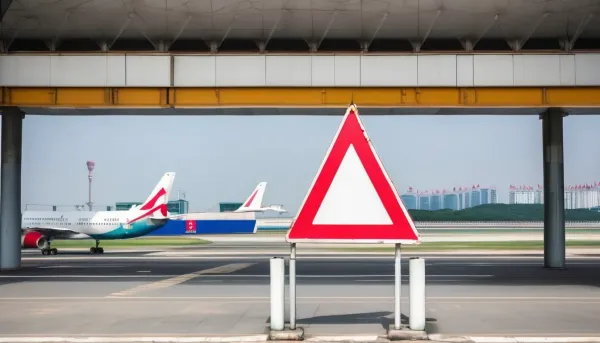Safety and Convenience of Taxis and Ridesharing in China
Taxis and ridesharing services in China cities offer a blend of convenience, affordability, safety, and modern amenities that cater well to both domestic commuters and international travelers.

Traveling around China, whether for business or pleasure, often involves navigating its cities' bustling streets. Taxis and ridesharing services stand out as popular choices among both locals and foreign tourists due to their convenience and perceived safety measures. However, like any transport option, they come with their own set of advantages and challenges.
Advantages
Stringent Safety Measures and Monitoring
In China, taxis and rideshare vehicles are subject to rigorous regulatory standards. Each vehicle is equipped with surveillance cameras and microphones, aimed at ensuring the safety and security of passengers. These measures help deter any potential misconduct and provide a sense of security, particularly for solo travelers or those unfamiliar with the area.
GPS Tracking for Transparency and Efficiency
The integration of GPS technology in taxis enhances transparency by monitoring routes in real-time. This feature prevents drivers from taking longer routes to inflate fares, thereby ensuring fair pricing for passengers. It also assists in navigation, especially in sprawling urban landscapes where precise directions can be crucial.
Very Affordable Pricing
One of the standout advantages of using taxis in China is their affordability. For instance, a typical 20-minute ride within a city often costs less than USD $5. This economical pricing makes taxis a cost-effective choice for short-distance travel, especially when compared to similar services in other global cities.
Accessibility and Payment Options
Payment convenience is another significant advantage. While cash is accepted, the widespread adoption of digital payment platforms such as Alipay and WeChat Pay allows for seamless transactions using smartphones. This accessibility is particularly beneficial for tourists who may not have local currency readily available.
Modern Fleet and Comfortable Travel
Chinese taxis generally feature a modern fleet of vehicles, offering passengers a comfortable and reliable mode of transport. This includes the increasing presence of electric taxis in major cities, contributing to environmental sustainability while providing a quieter and smoother ride experience.
Challenges
Limited Assistance with Luggage
One common drawback reported by tourists is the lack of assistance with luggage. Unlike in some countries where drivers routinely help passengers with their bags, most Chinese taxi drivers do not offer this service, which can be inconvenient for travelers with heavy luggage or mobility challenges.
Privacy Concerns with In-Vehicle Cameras
While the surveillance cameras and microphones installed in taxis enhance safety, they also raise privacy concerns for some passengers. Foreign tourists, in particular, may feel uneasy about being recorded during their journey, even though the intention is primarily for safety and regulatory purposes.
Vehicle Size and Passenger Capacity
Another limitation is the standardization of vehicle sizes. Most taxis in China are five-seater sedans, limiting passenger capacity to four passengers plus the driver. This can be restrictive for larger groups or families needing more seating options, as seven-seater vehicles are relatively uncommon.
Language Barrier
Communication can also pose challenges, as the majority of taxi drivers in China do not speak English or other foreign languages fluently. This language barrier can make it difficult for tourists to convey their destinations accurately or engage in meaningful interactions beyond basic transactions.
Personal Reflection and Recommendations
Having utilized taxis extensively across several Chinese cities, I've found them generally reliable and safe for commuting. The convenience of GPS tracking and digital payments has significantly enhanced my travel experience, particularly in navigating unfamiliar routes and handling transactions seamlessly.
However, I would advise fellow travelers to consider the potential challenges, such as the lack of luggage assistance and language barriers, when planning their trips. It's also important to be aware of the privacy implications of onboard surveillance systems and to respect local customs and regulations while using taxi services.
Conclusion
In conclusion, taxis and ridesharing services in China offer a blend of convenience, safety, and modern amenities that cater well to both domestic commuters and international travelers. While the industry's regulatory framework ensures a high standard of service and security, travelers should be mindful of the potential drawbacks, such as limited passenger capacity and communication barriers. By understanding these dynamics and leveraging available technologies, visitors can make the most of their travel experiences while navigating China's vibrant cities with ease.



